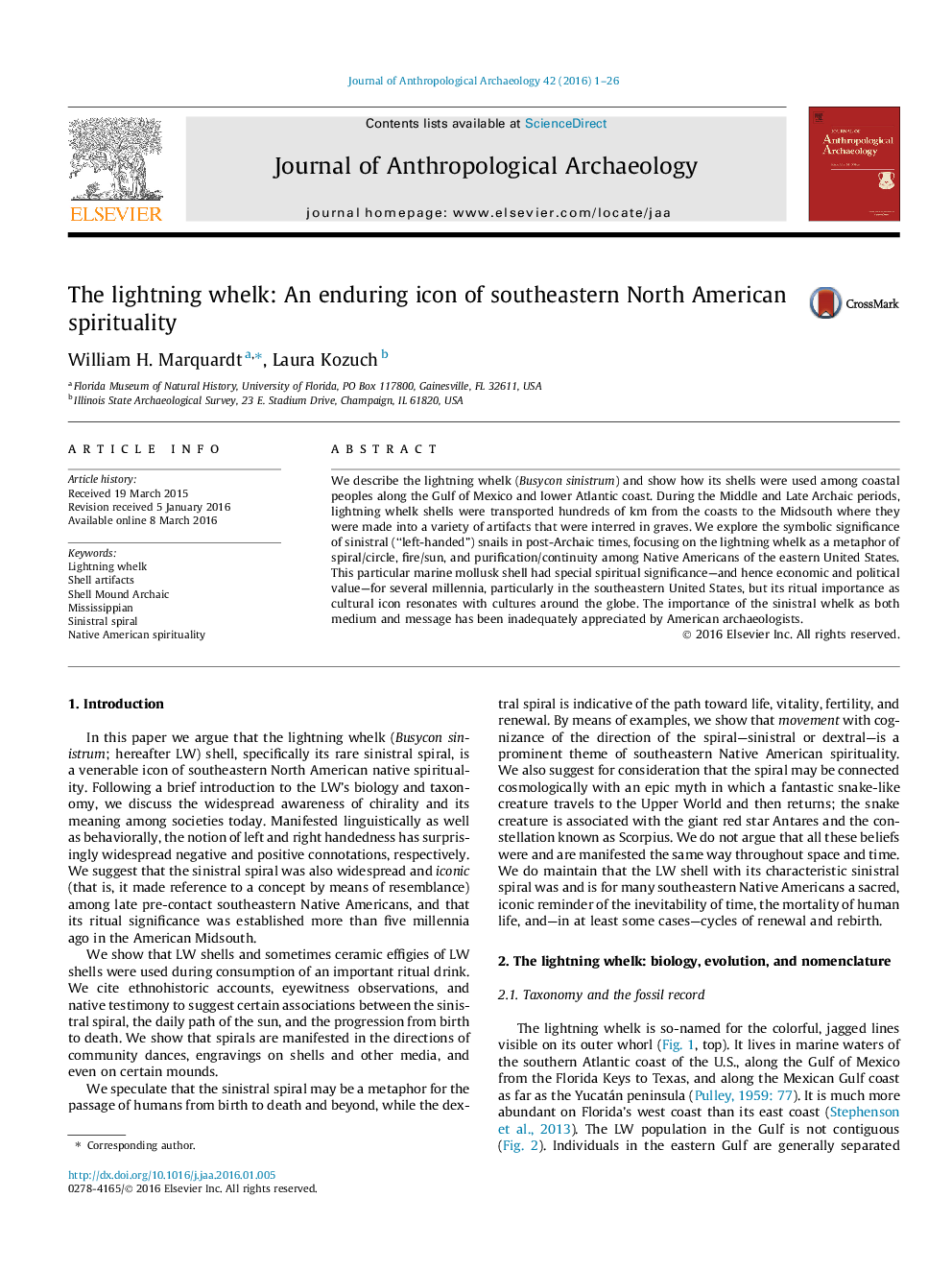| Article ID | Journal | Published Year | Pages | File Type |
|---|---|---|---|---|
| 1034856 | Journal of Anthropological Archaeology | 2016 | 26 Pages |
•Lightning whelk shells were used as ceremonial objects as early as 3000 BC in the Southeast.•The whelk’s sinistral spiral was an icon for ideas about the sun, life, and death.•Ceramic imitations of lightning whelk cups were used ceremonially.•Millions of beads made from these shells were used in the southeastern US.•The spiral resonates with southeastern spirituality and cosmology past and present.
We describe the lightning whelk (Busycon sinistrum) and show how its shells were used among coastal peoples along the Gulf of Mexico and lower Atlantic coast. During the Middle and Late Archaic periods, lightning whelk shells were transported hundreds of km from the coasts to the Midsouth where they were made into a variety of artifacts that were interred in graves. We explore the symbolic significance of sinistral (“left-handed”) snails in post-Archaic times, focusing on the lightning whelk as a metaphor of spiral/circle, fire/sun, and purification/continuity among Native Americans of the eastern United States. This particular marine mollusk shell had special spiritual significance—and hence economic and political value—for several millennia, particularly in the southeastern United States, but its ritual importance as cultural icon resonates with cultures around the globe. The importance of the sinistral whelk as both medium and message has been inadequately appreciated by American archaeologists.
Graphical abstractFigure optionsDownload full-size imageDownload high-quality image (229 K)Download as PowerPoint slide
